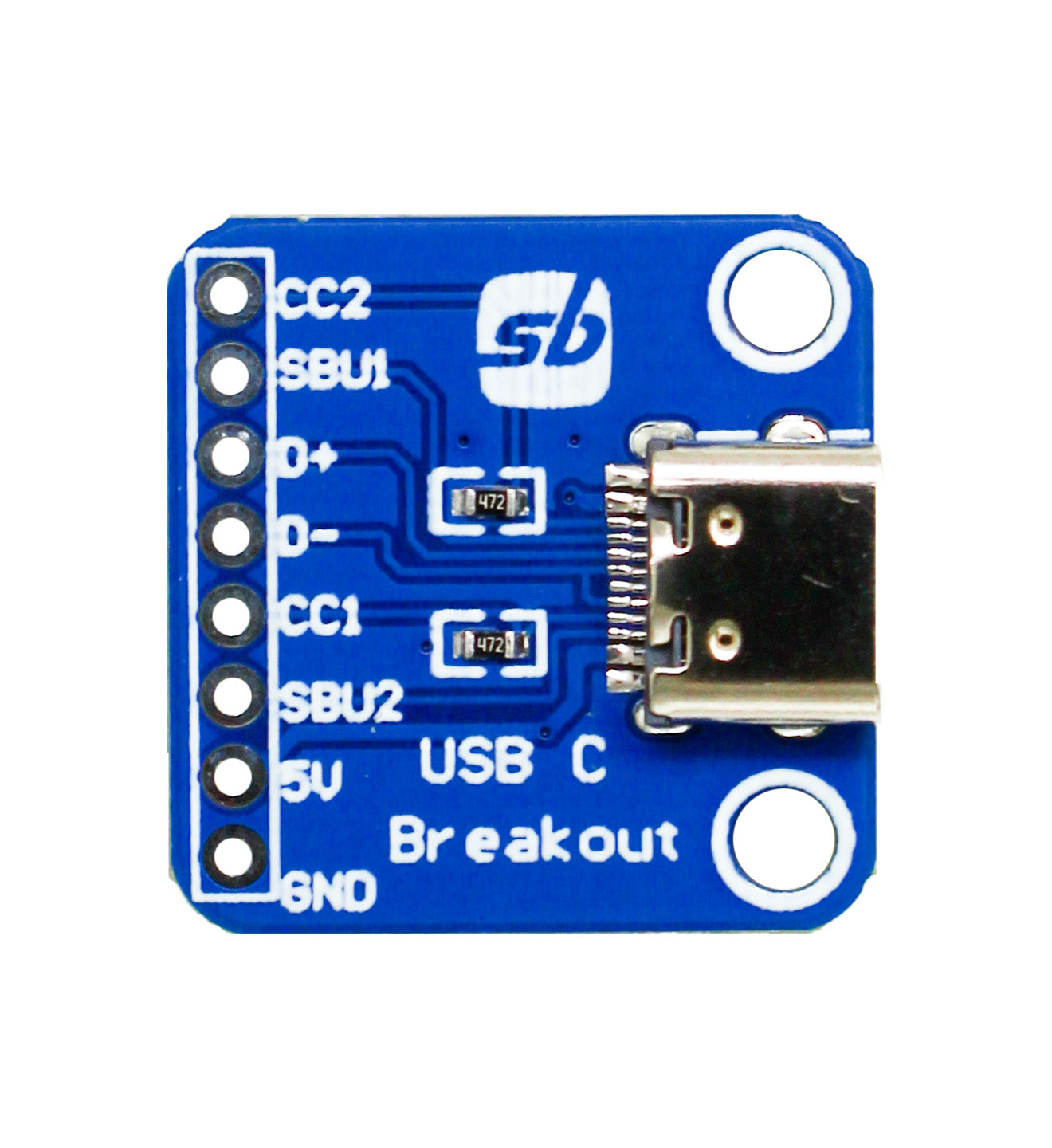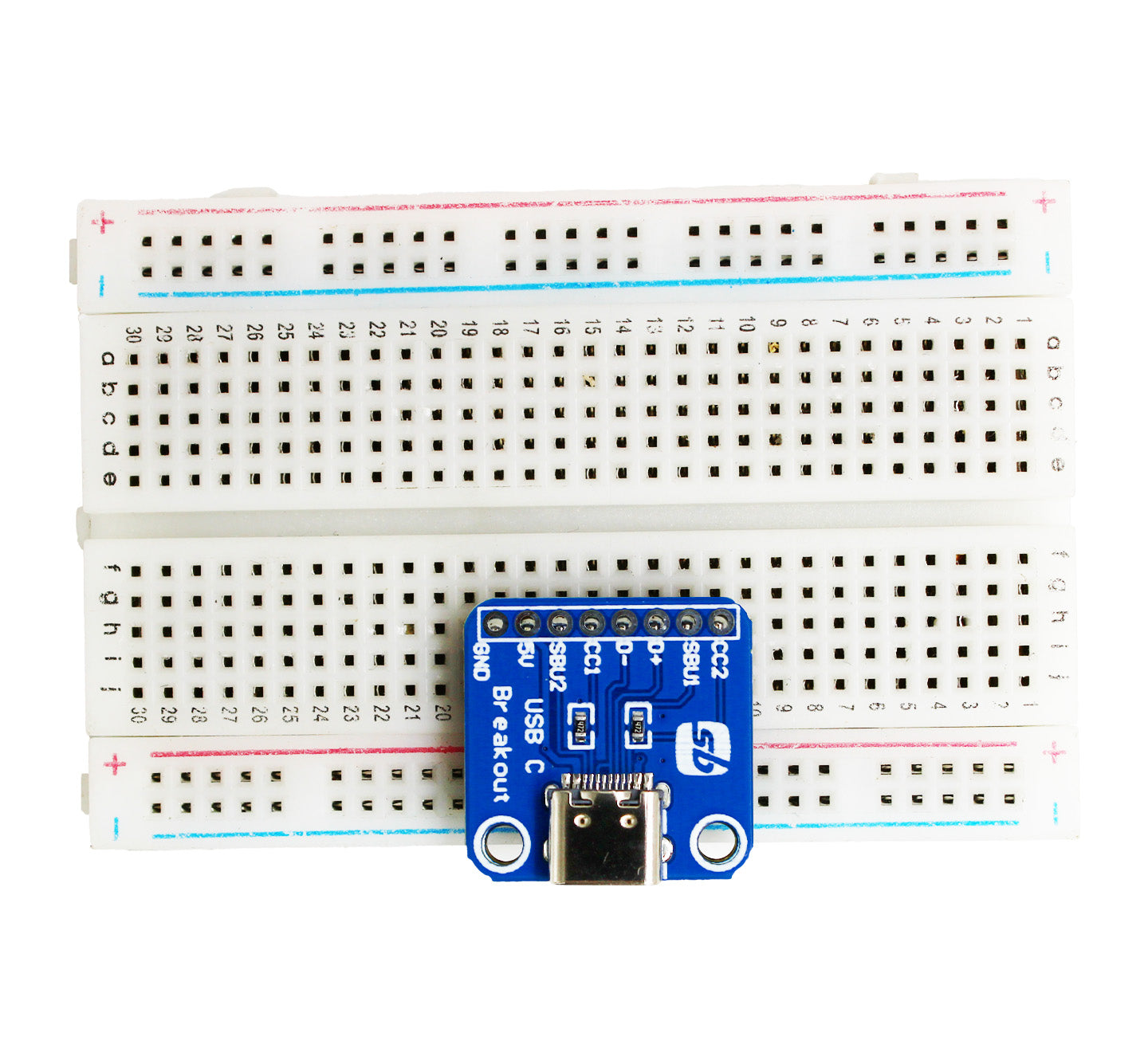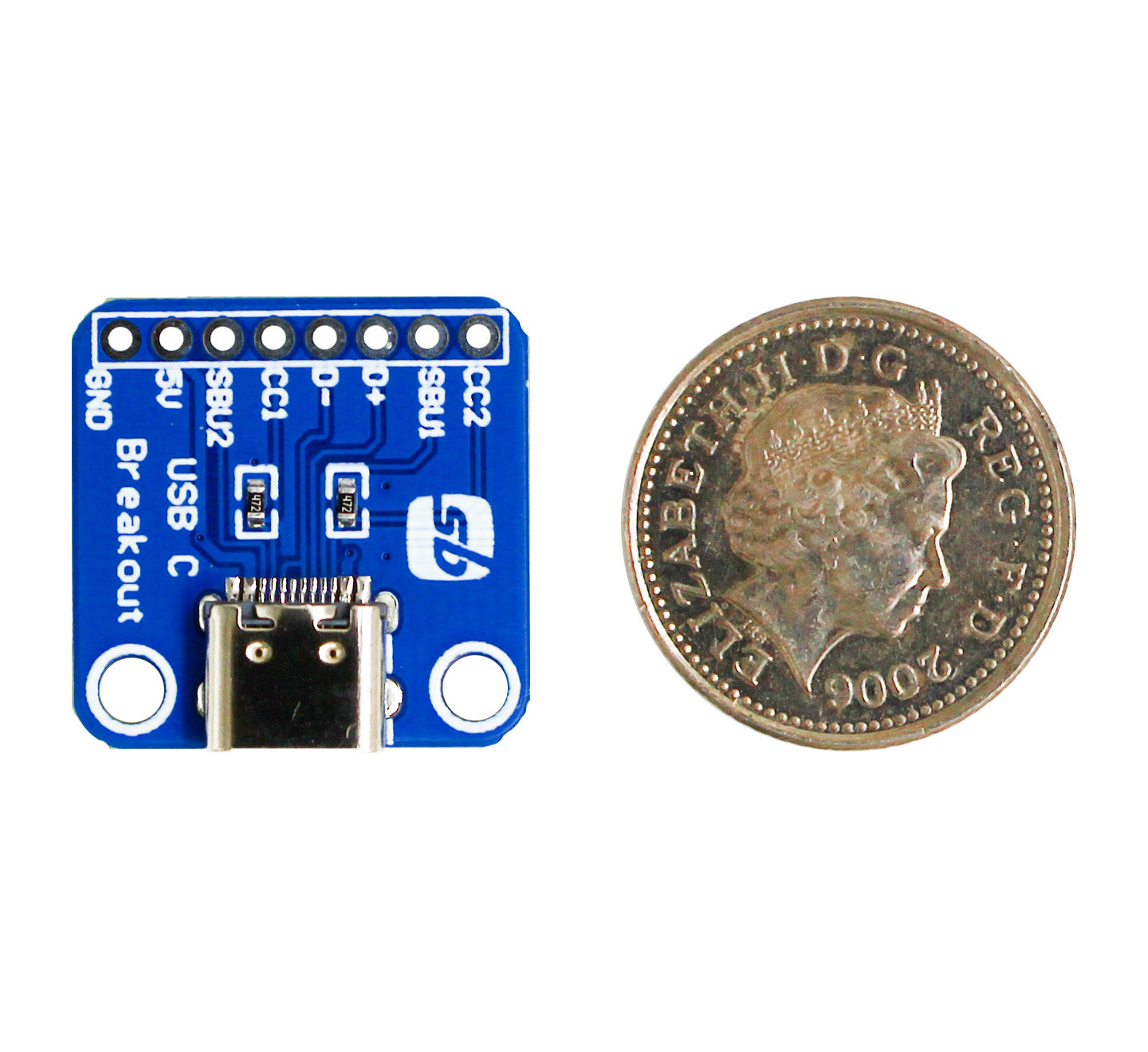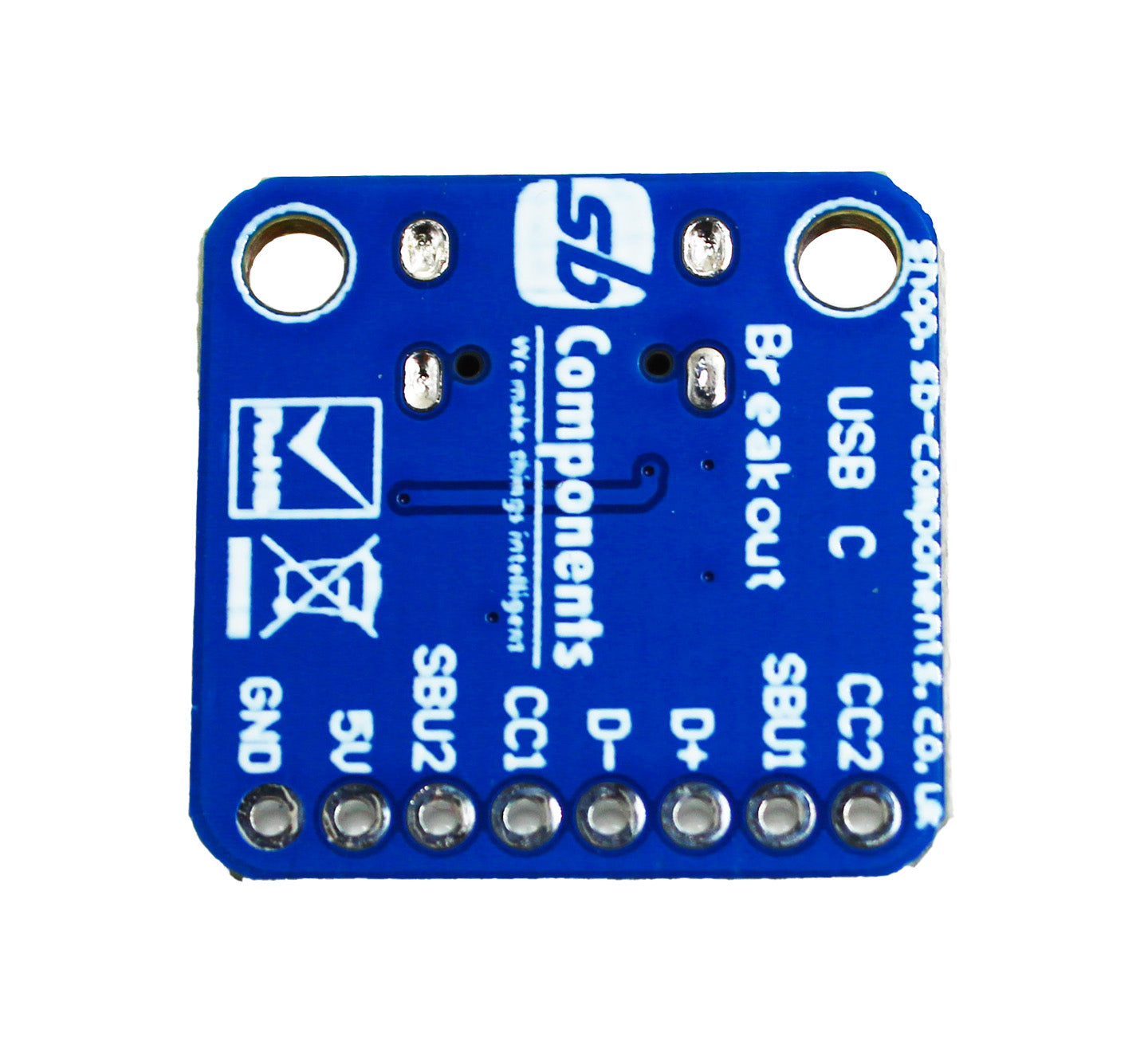A USB Type-C breakout board is a hardware component that provides easy access to the pins and functionalities of a USB Type-C connector. Since USB-C is reversible and can deliver up to 1.5 Amps of power, you won't ever have to worry about plugging a cable in the incorrect way again.

It allows you to interface with Type-C devices, such as smartphones, laptops, or development boards, for various purposes.
The breakout board typically features a Type-C connector on one end and exposed pins or headers on the other end. These exposed pins provide access to different signals and power lines, like CC1/CC2, SBU1/SBU2, D+/-, 5V, and GND. Breakout includes a 0.1" pitch header, allowing for a simple breadboard connection.
With a Type-C breakout board, you can perform tasks like power delivery, data transfer, or testing of Type-C functionalities. It enables you to prototype and develop projects that require interfacing with Type-C devices or integrating Type-C functionality into your designs.
Overall, a Type-C breakout board is a useful tool for working with USB Type-C connectors and exploring the capabilities of Type-C devices in your projects.
Function:

Features:
- Connector Type: USB Type-C
- Reversible plug
- No upstream/downstream facing connector. The cable now has the same connector on both ends.
- Power Delivery (PD) Support
- Backward compatible with older USB versions.
Specifications:
- Contact Current Rating: 3A Max.
- Rated Voltage: 30V Max.
- Operating temperature: -40°~+85°
- Mechanical Characteristics:
- Insertion force: 5~20Nf.
- Withdrawal Force: 6~20Nf.
- Durability Cycles: 10000 Cycles.
- Weight: 3g (0.1oz)
Pinouts:

- 0.1” Pitch Header Breakout
- Type C connector
Dimensions:

Applications:
- Prototyping and Development
- Testing and Debugging
- Custom Cable Creation
- Integration into Custom Devices
- Educational and Learning Purposes, Reverse Engineering
Resources:
Hardware Repository: Schematic, 3D, Dimension files, Etc.









